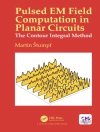Liquid Crystal Display (LCD) projection technology has, in recent years, led the way in large area displays because of its potential to deliver scalable, high-resolution images at a low cost. Since large displayed images demand high brightness and contrast, a full understanding of polarization, and how to manage its effects, is essential for the development of quality systems.
Using the example of LCD projection technology, this practical text provides a thorough coverage of polarization engineering problems, with appropriate solutions and mathematical tools for analysis.
Key features:
* A comprehensive introduction to the basics of polarization, LCDs, projection technologies and LCD projection system engineering.
* A detailed examination of optical system components, including polarizers and retarder stack filters.
* A full treatment of system contrast and color management issues.
* In-depth analyses of how to manage polarization in the major LCD projection systems.
Display engineers, scientists and technicians active in this field will find this a valuable resource, as will developers of large screen projection displays and microdisplays. Also useful for graduate students and researchers as an accessible introduction to the technology.
The Society for Information Display (SID) is an international society, which has the aim of encouraging the development of all aspects of the field of information display. Complementary to the aims of the society, the Wiley-SID series is intended to explain the latest developments in information display technology at a professional level. The broad scope of the series addresses all facets of information displays from technical aspects through systems and prototypes to standards and ergonomics
Jadual kandungan
Series Editor’s Foreword.
Preface.
1 Introduction.
1.1 The Case for Projection.
1.2 History and Projection Technology Overview.
1.3 Scope of the Book.
2 Liquid Crystal Projection System Basics.
2.1 Introduction.
2.2 Brightness and Color Sensitivity of the Human Eye.
2.3 Photometric Measurement.
2.4 Summary of What Constitutes a ‘Good’ RPTV
Display in the Current Marketplace.
2.5 System Engineering.
2.6 Étendue Considerations.
3 Polarization Basics.
3.1 Introduction.
3.2 Electromagnetic Wave Propagation.
3.3 Interaction with Media.
3.4 Index Ellipsoid Visualization.
3.5 Modeling Techniques.
4 System Components.
4.1 Introduction.
4.2 Retarders.
4.3 Polarizers.
4.4 Interference Filters.
4.5 Polarizing Beam Splitters (PBSs).
4.6 Other Components.
5 Liquid Crystal Displays (LCDs).
5.1 Description and Brief History.
5.2 Anisotropic Properties of Liquid Crystals.
5.3 Frank Free Energy and Electromagnetic Field Contribution to
Free Energy.
5.4 Alignment Layer and LC Pretilt Angle.
5.5 Rotational Viscosity.
5.6 Electro-optical Effect of LCs.
5.7 LC Modes for Projection.
5.8 FOV of LCDs.
6 Retarder Stack Filters.
6.1 Introduction.
6.2 Principle and Background of RSFs.
6.3 RSFs in LC Projection Systems.
6.4 Design of RSFs.
6.5 Properties of Retarder Stacks.
7 System Contrast.
7.1 Introduction.
7.2 On-axis Contrast.
7.3 Off-axis Effects.
7.4 PBS/LCOS Compensation.
7.5 ANSI Contrast Enhancement.
7.6 Skew Ray Compensated Retarder Stack Filters.
7.7 Alternative Projection Systems.
7.8 Overall System Contrast.
8 Color Management.
8.1 Introduction.
8.2 System Color Band Determination.
8.3 Color Management in Projection Systems.
9 Transmissive Three-panel Projection System.
9.1 Introduction.
9.2 Brief System Description.
9.3 System Throughput.
9.4 Contrast.
9.4.1 Negative c-plate Compensation.
10 Three-panel Reflective Systems.
10.1 Introduction.
10.2 3×PBS/X-cube System.
10.3 Polarization Color Filter Systems.
10.4 Three-panel LCOS System Comparison.
11 Single and Dual Panel LC Projection Systems.
11.1 Introduction.
11.2 Generic Color Sequential Single Panel Reflective LC
System.
11.3 Example Single Panel Color Sequential Systems.
11.4 Two-panel Systems.
11.5 Commercialized Single Panel Projection Systems Based on
Spatial Color Separation.
Appendix A.
Index.
Mengenai Pengarang
Jianmin Chen, Colorlink Inc, Boulder, CO, USA
Dr Chen has published over 50 articles over 15 years in the fields
of silicon defects, High Tc superconductors, liquid crystal physics
and devices, and, more recently, projection display systems. Prior
to joining Colorlink, he worked as a research scientist in the flat
panel research group of Polaroid Corporation. Sophisticated
simulation software developed by Dr. Chen has been used in many
companies and research institutes around the world to simulate the
optics phenomena at the system level in liquid crystal display and
projection system. He holds five issued US patents and has been
working in the LCD field for more than 10 years.
Michael G Robinson Director of Product Engineering,
Colorlink Inc, Boulder, CO, USA
During his career he has published in excess of 50 papers and has
been granted in excess of 40 international patents. Best known for
his work on the Color Quad architecture, he has established a
reputation for academic excellence amongst researchers and
engineers in the international field of Optical Systems
Engineering.
Gary D. Sharp Vice President, Colorlink Inc, Boulder, CO,
USA
Dr Sharp has over 80 issued/pending patents, and over 40 journal
publications and conference presentations to his name. He is the
co-founder of Colorlink.












